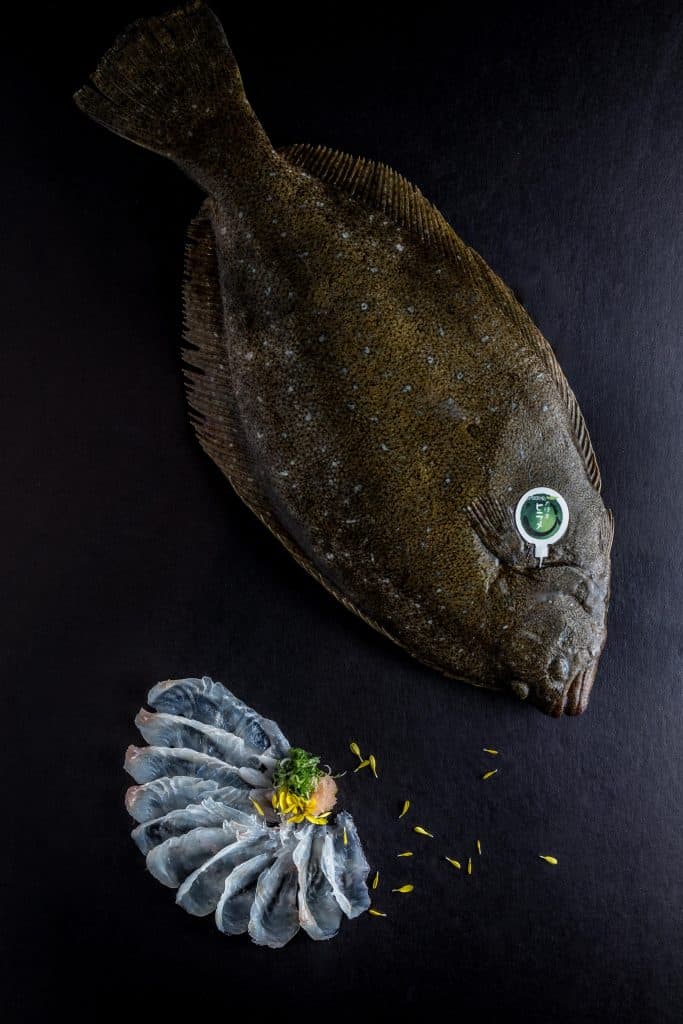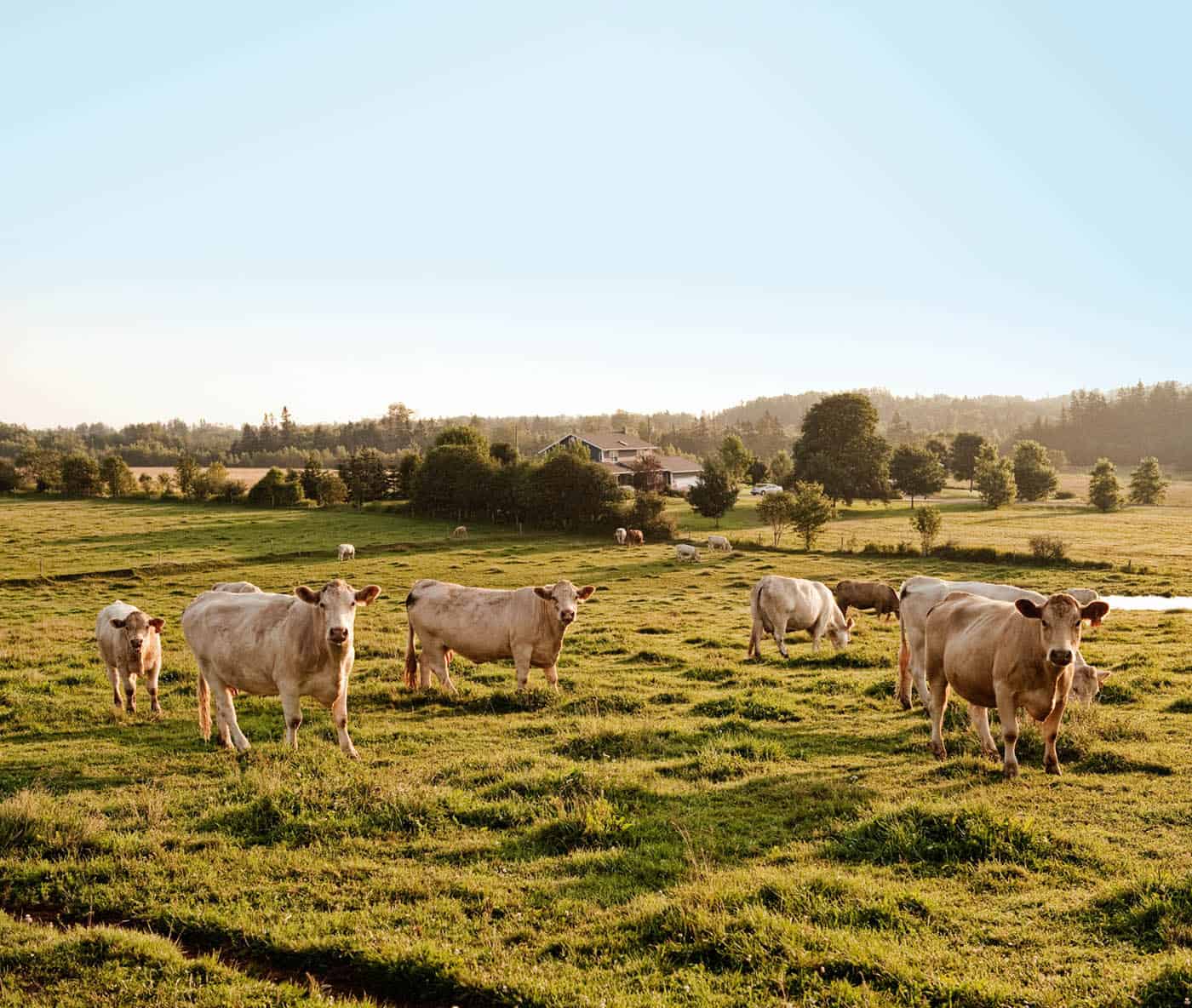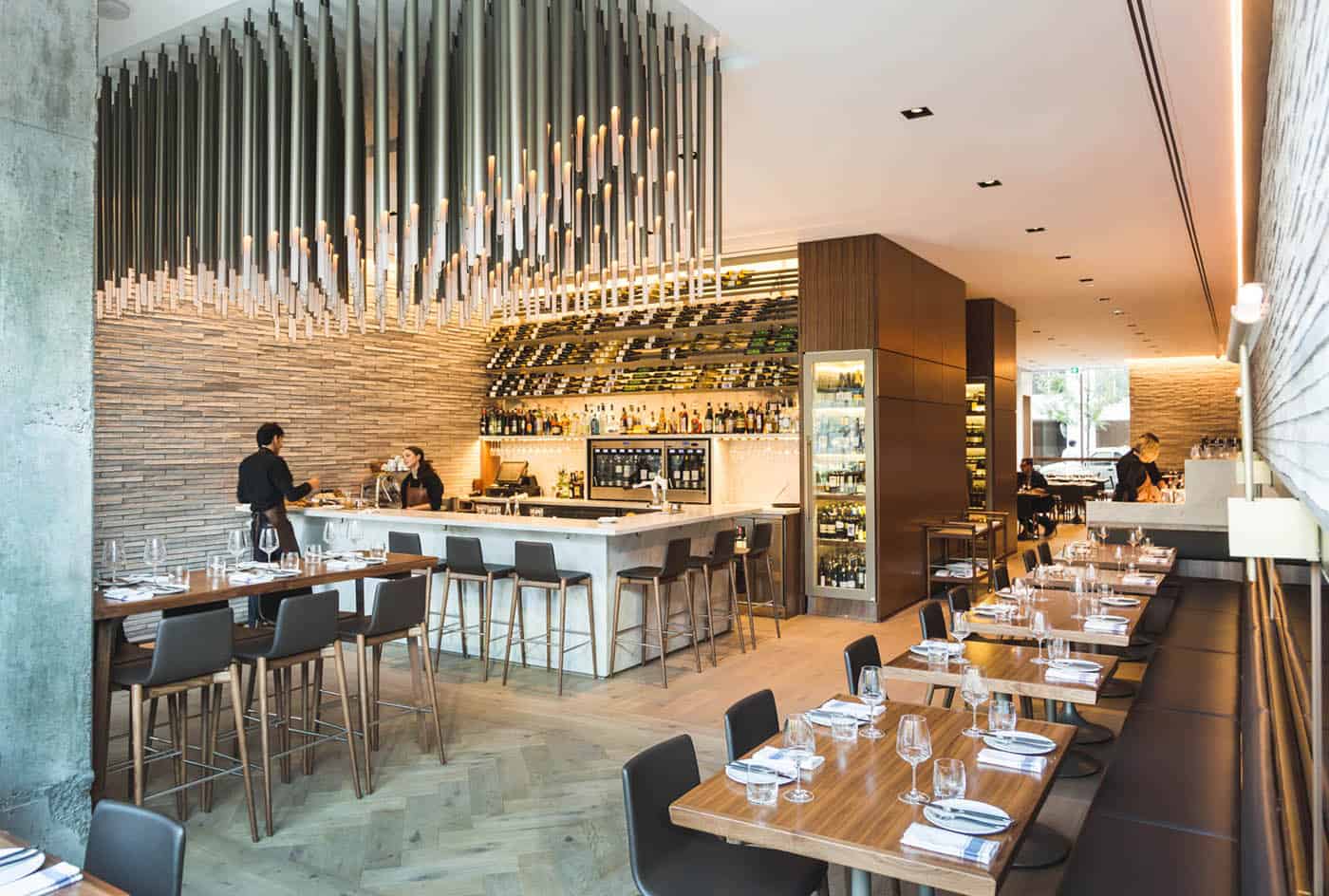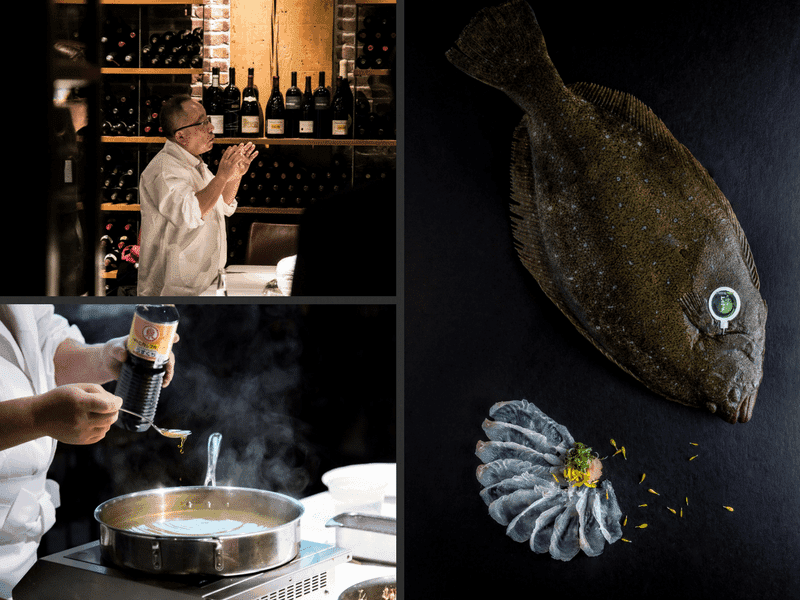
Dashi is simple to make and difficult to understand.
Every cuisine has its building blocks – but dashi is more than that. It is the foundation and the glue of Japanese cuisine. Take dashi away, and Japanese cuisine falls apart. Dashi is its soup base and the poaching medium, the sauce and the dressing. It is the prime conduit of umami. Which is to say that in the theatre of Japanese flavours, it is the ultimate supporting actor, the player in the background that enables every other flavour on the plate to give a command performance, and shine.
All this from three ingredients: water, dried seaweed (kombu) and shavings of dried fish (katsuobushi). Well, that and a little mastery.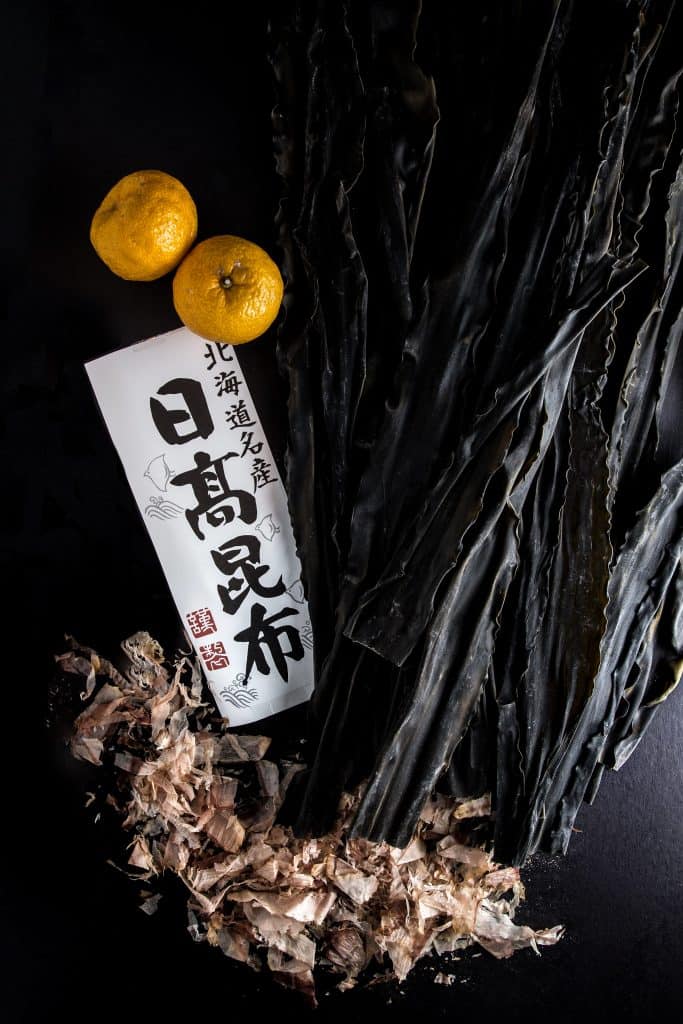 Enter Japanese culinary ambassador Takashi Tamura, third generation kaiseki master chef of Tokyo’s Tsukiji Tamura, aka “The Godfather of Dashi.”
Enter Japanese culinary ambassador Takashi Tamura, third generation kaiseki master chef of Tokyo’s Tsukiji Tamura, aka “The Godfather of Dashi.”
Chef Tamura drinks dashi every day. “If I don’t I get sick,” he claims. “When I pee, I pee dashi.”
He also has an unusual and fascinating way of preparing it – which he demonstrated Monday afternoon at Vancouver’s venerable seafood restaurant and sushi bar, the Bluewater Café. This was the first Best of Japan: An Exclusive Culinary Workshop, a series of three seminars and cooking demonstrations co-hosted by Canada’s 100 Best Restaurants to promote the Taste of Japan and the Japanese Food Supporter Program which helps enlist new suppliers to the ranks of certified Japanese purveyors.
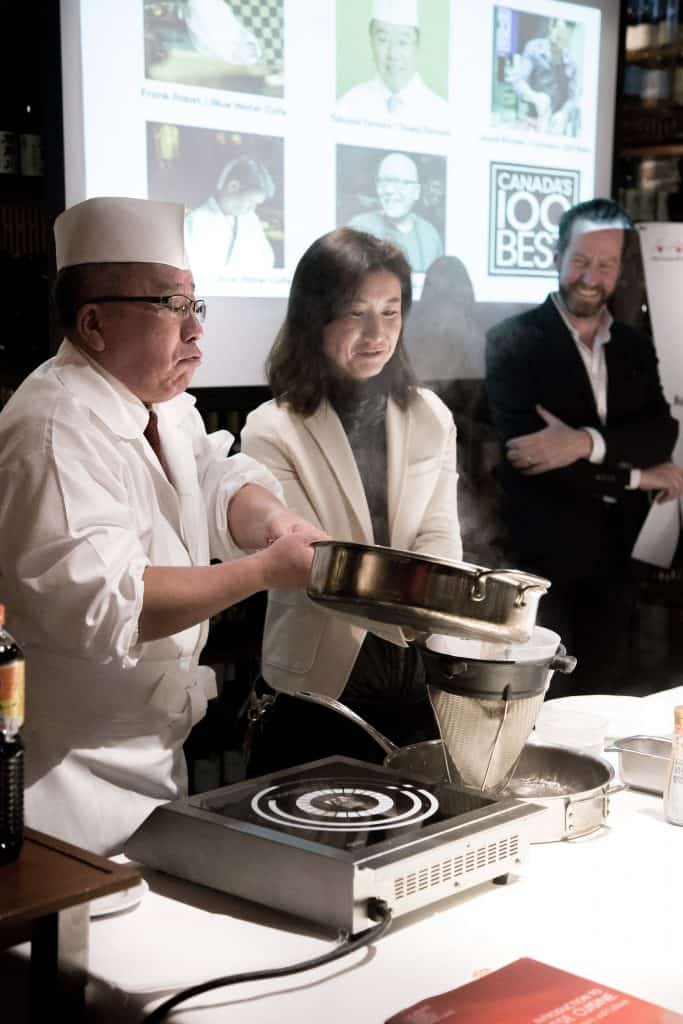 In the customary, simple approach to dashi making, water and sparse quantities of kombu and katsuobushi are brought to the simmer, and strained. If you are chef Tamara, you use more and heat it less. The kombu is not washed or wiped down, just soaked – not for a prescribed amount of time, but rather, for however long the kombu takes to absorb enough water to float to the surface. Then the water is heated to 60°C (140°F) for 1 hour, the kombu is removed, the temperature is increased to 85°C (185°F) and the katsuobushi is introduced – off heat. Then it is stirred, quickly steeped, and the liquid is strained again.
In the customary, simple approach to dashi making, water and sparse quantities of kombu and katsuobushi are brought to the simmer, and strained. If you are chef Tamara, you use more and heat it less. The kombu is not washed or wiped down, just soaked – not for a prescribed amount of time, but rather, for however long the kombu takes to absorb enough water to float to the surface. Then the water is heated to 60°C (140°F) for 1 hour, the kombu is removed, the temperature is increased to 85°C (185°F) and the katsuobushi is introduced – off heat. Then it is stirred, quickly steeped, and the liquid is strained again.
“Never squeeze the katsuobushi,” chef Tamara cautioned. “We only use the best part.”
Think of it like the heart of the whiskey, the first cold pressing of olive oil rolled into one. And we are not yet done. To build the smoky, umami-rich dashi base into soup – osuimono (clear broth with fish and vegetables) – chef Tamura next adds salt, and then shoyu (pale soy sauce).
“They are fighting,” chef Tamura says as he stirs the pot. “The salt got their first and wants to know what the soy sauce is doing there…”
Next, he picks up some sake and adds a glug of that.
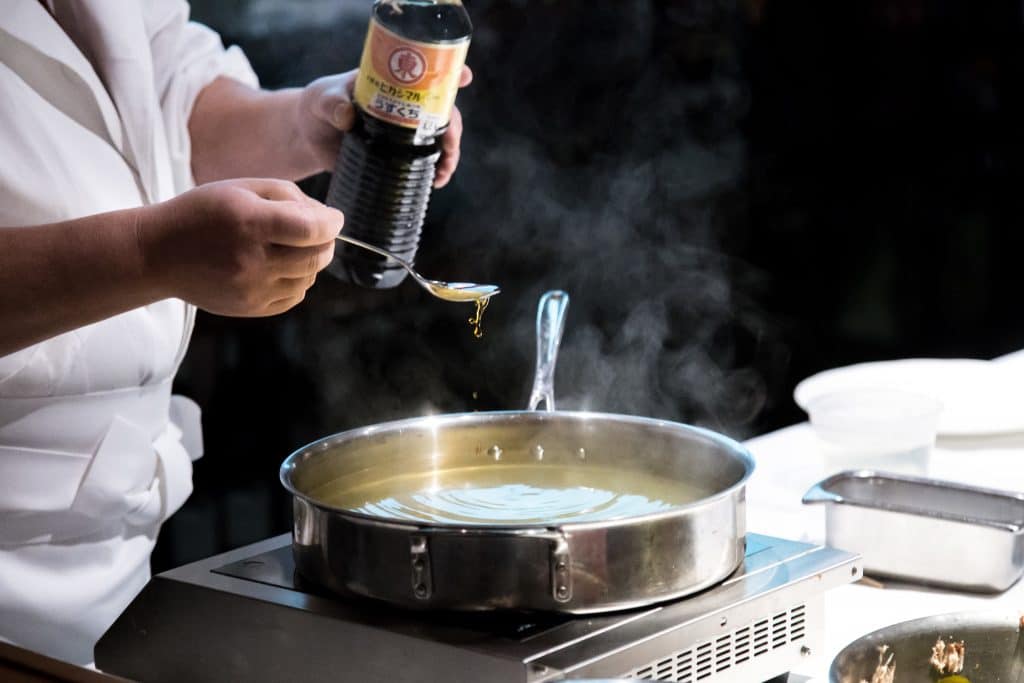 “Now the sake has made them happy. No more fighting. So the salt says to the soy, ‘Let’s go to the Bluewater Café and get some sashimi.”
“Now the sake has made them happy. No more fighting. So the salt says to the soy, ‘Let’s go to the Bluewater Café and get some sashimi.”
In this instance, the sashimi is artfully cut from the top fillet of a hirame, or fluke, imported fresh from Japan by True World Foods. It shares space in the soup bowl with julienned carrot, burdock, green onion and yuzu zest. The hot broth is poured over top. Five colours, four textures, luscious fish and lashings of umami, all packed into one taste of Japan.

